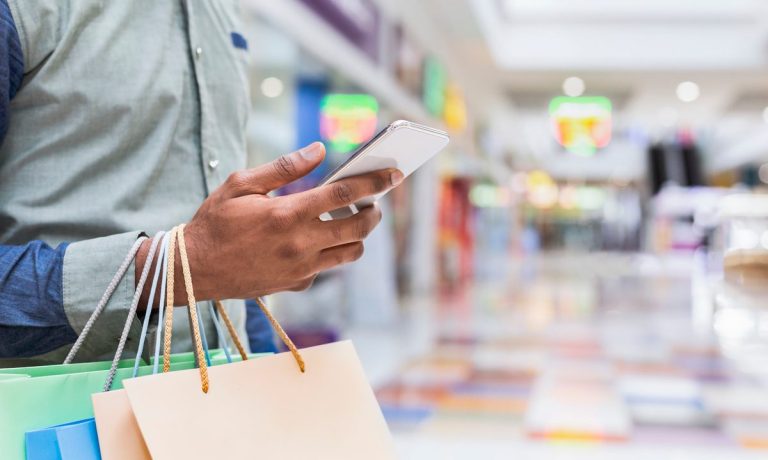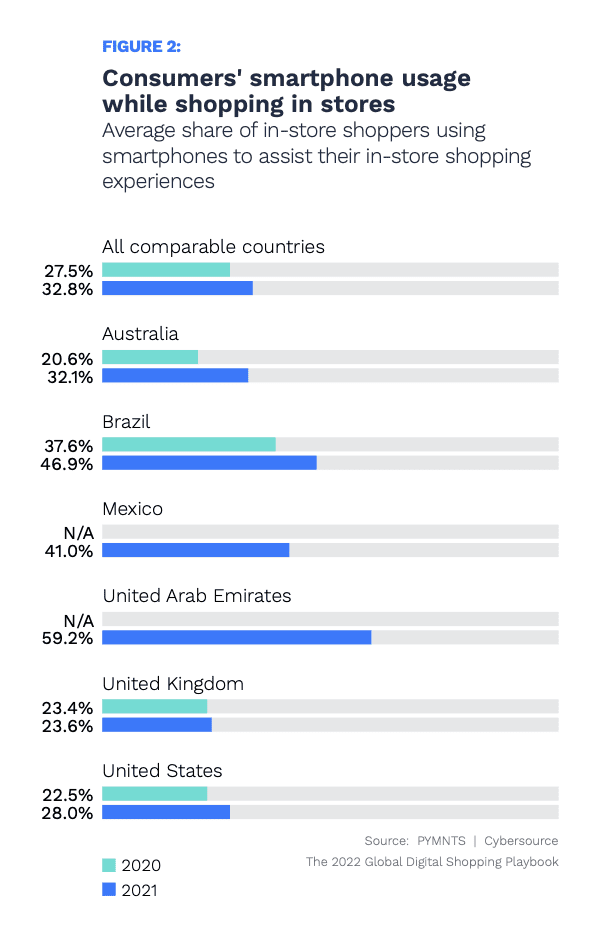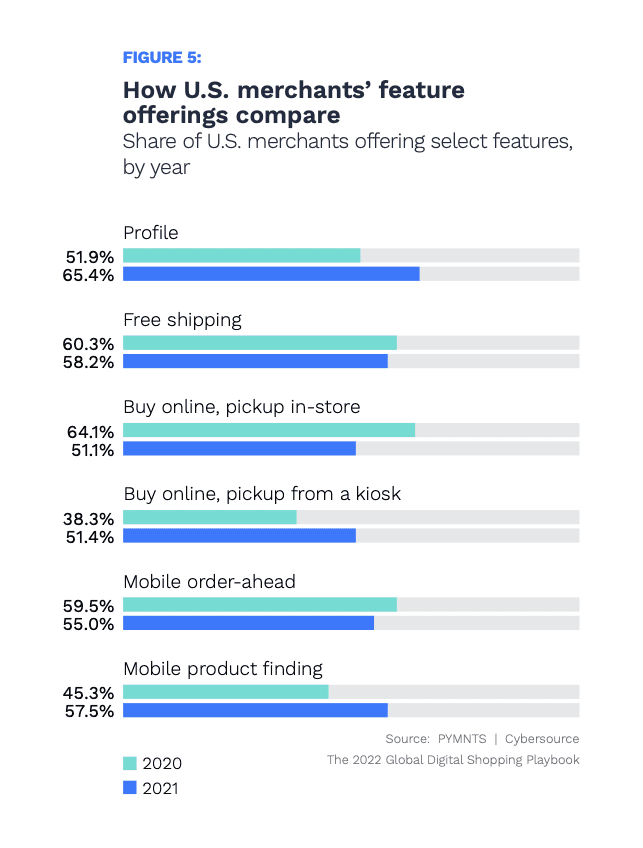New Study Shows Consumers Taking Digital Habits In-Store

Will that be buy online, pickup in store (BOPIS) or curbside? It depends on where you are and where you shop, and there are key variations for which merchants need strategies and solutions.
In America, consumers are taking pandemic-era shopping habits with them as we appear to be exiting the worst parts — or getting better at living with it — showing a taste for omnichannel shopping that began as necessity and is now appreciated for its convenience and speed.
The 2022 Global Digital Shopping Playbook U.S. Edition, a PYMNTS and Cybersource collaboration, is part of a six-nation study of more than 13,000 consumers and 3,100 businesses in six major regions, and finds U.S. consumers four times as likely as those in other regions we studied to use online ordering and curbside pickup, for example.
With U.S. shoppers using curbside in higher numbers than other markets, we know they’re driving to the store. The objective then, based on the data, is getting them to walk inside.
Per the U.S. edition 47% of consumers who pick up orders in-store wind up purchasing more products by entering to make their pickup. Comparatively, 28% of consumers outside the U.S. buy additional products on trips to pick up eCommerce orders inside physical stores.
In short, 5.5 million U.S. consumers “sometimes, often or always buy extra items when they pick up online orders in brick-and-mortar stores” compared to 25% of U.K. shoppers an 27% of Brazilian shoppers by comparison, giving merchants an opportunity for added revenue.

Get the study: The 2022 Global Digital Shopping Playbook U.S. Edition
Mobile’s In-Store Magic
Now serving as the remote control to the connected economy, smartphones play a central role in how U.S. consumers shop and interact with physical stores. Merchants must be ahead of this.
According to the U.S. edition, “28% of U.S. consumers (a quantity representing 26 million people) used their smartphones the last time they shopped in physical stores. This is a 24% increase from the share who did so just one year prior, underscoring local shoppers’ increasing desire to integrate digital elements into their brick-and-mortar retail journeys.”
Somewhat surprisingly, the U.S. lags other regions in mobile-assisted shopping, with 47% of Brazilian consumers using smartphones while shopping in stores, a number that rises to 59% in the United Arab Emirates. Only the U.K. comes in lower than the U.S. at 24% of consumers.
When they are using smartphones in stores, consumers tend to be looking for savings or inspirations for things they want but didn’t necessarily go looking for to begin with.
This suggests that retailers whose mobile apps, websites and physical stores are optimized for this blended buying journey can move more product than what’s being ordered ahead.
Specifically, 12% of U.S. consumers using smartphones while shopping in-store are seeking coupons and discounts for the items on their shopping lists, while 9% are comparing prices between merchants and 10% are checking out product information or reviews.

Get the study: The 2022 Global Digital Shopping Playbook U.S. Edition
Getting Features Right
Merchants clearly need to create seamless journeys from digital to store as consumer behavior is leaning into this form of shopping. To optimize revenues, stores must elevate experience.
This makes mobile features key to unlocking new cross-channel potential.
Per the study, “U.S. merchants that allow shoppers to use a mix of online and in-store shopping channels, such as allowing curbside pickup for orders made on computers, earn an average Index score of 127. This score is 68% higher than those that allow shopping in brick-and-mortar stores without digital in-store features.”
U.S. merchants that are bringing mobile experience inside the store enjoy an even wider advantage, with research finding that allowing shoppers “to use a mix of mobile and brick-and-mortar shopping channels earn an average Index score of 139.”
Importantly, that index score is 84% higher than for U.S. merchants allowing customers to shop in stores not yet upgraded to accommodate such omnichannel digital experiences.
